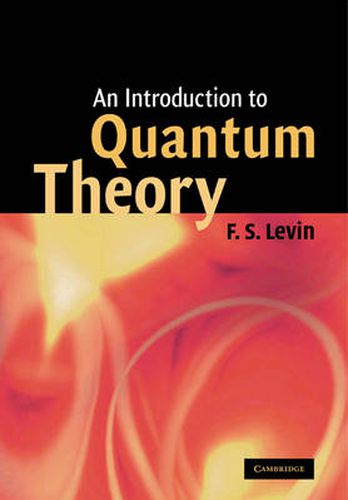Readings Newsletter
Become a Readings Member to make your shopping experience even easier.
Sign in or sign up for free!
You’re not far away from qualifying for FREE standard shipping within Australia
You’ve qualified for FREE standard shipping within Australia
The cart is loading…






Underpinning the axiomatic formulation of quantum theory presented in this undergraduate textbook is a review of early experiments, a comparison of classical and quantal terminology, a Schroedinger-equation treatment of the one-dimensional quantum box, and a survey of relevant mathematics. Among the many concepts comprehensively discussed are: operators; state vectors and wave functions; experimental observables; classical/quantal connections; and symmetry properties. The theory is applied to a wide variety of systems including the non-relativistic H-atom, external electromagnetic fields, and spin1/2. Collisions are described using wave packets. Various time-dependent and time-independent approximations are discussed; applications include electromagnetic transition rates and corrections to the H-atom energies. The final chapter deals with identical-particle symmetries and their application to the He atom, the Periodic Table and diatomic molecules. There are also brief treatments of advanced subjects such as gauge invariance and hidden variables.
$9.00 standard shipping within Australia
FREE standard shipping within Australia for orders over $100.00
Express & International shipping calculated at checkout
Underpinning the axiomatic formulation of quantum theory presented in this undergraduate textbook is a review of early experiments, a comparison of classical and quantal terminology, a Schroedinger-equation treatment of the one-dimensional quantum box, and a survey of relevant mathematics. Among the many concepts comprehensively discussed are: operators; state vectors and wave functions; experimental observables; classical/quantal connections; and symmetry properties. The theory is applied to a wide variety of systems including the non-relativistic H-atom, external electromagnetic fields, and spin1/2. Collisions are described using wave packets. Various time-dependent and time-independent approximations are discussed; applications include electromagnetic transition rates and corrections to the H-atom energies. The final chapter deals with identical-particle symmetries and their application to the He atom, the Periodic Table and diatomic molecules. There are also brief treatments of advanced subjects such as gauge invariance and hidden variables.